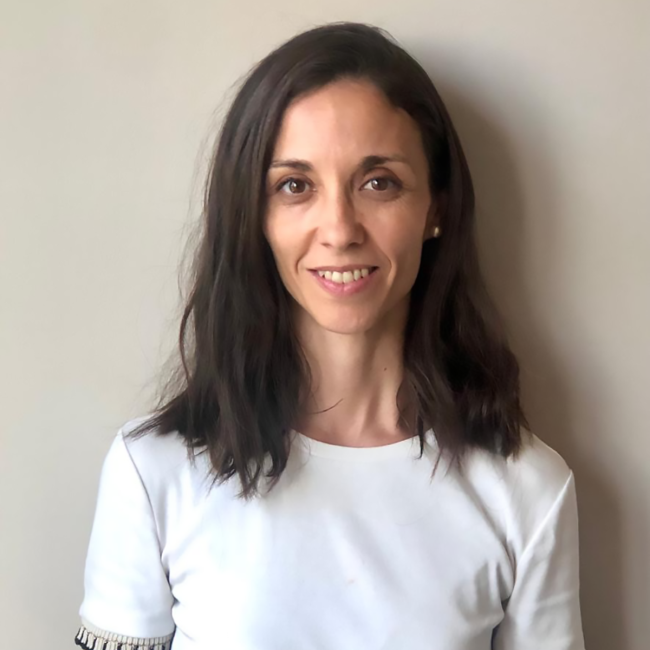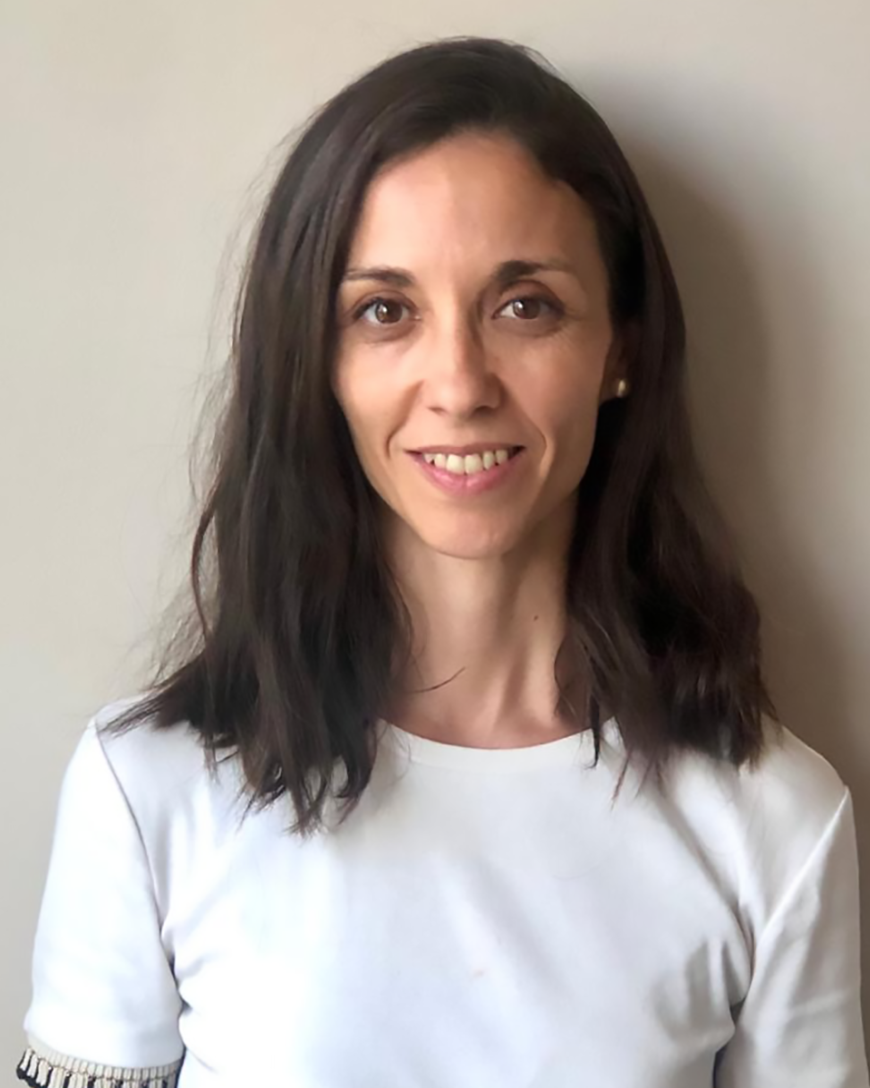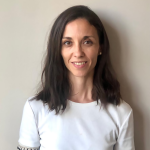The under/over series puts a spotlight on gender equity in data for social impact, and aims to raise awareness of successful ways for women and gender-diverse individuals to be represented in data and to themselves harness the power of data to drive social impact. Cristina López Mayher, Gender and Diversity Consultant at the Inter-American Development Bank, illustrates the importance of using data to tell an accurate and holistic story about gender and the changes we need to make.
Tell us about the role of data collection, analysis, and action in your work. What significant findings have emerged from it and what impact or outcomes have you observed?
I work with both public and private organizations on how to use gender data to inform their work. Collecting and analyzing data is key from the beginning of any engagement — not only to provide facts to those who are still skeptical, but also to identify an organization’s specific needs and measure the results of any intervention.
Just asking the question “Do you know how many women are part of your clientele or workforce or recent promotions?” moves the needle because more often than not, the answer is “no” or “yes” but only in absolute numbers without real analysis.
Recently, I worked with a financial institution that wanted to strengthen the gender perspective of its client portfolio, particularly in rural areas where they suggested that the local culture made it difficult to include women. Understanding the local dynamics was critical, as many of the potential clients were actually partners of the current male clients.
The problem was that the institution had a credit limitation per household. In other words, the credit provided to the man limited the amount left to be offered to the women of that household. Data was key, but going beyond sex-disaggregated data and understanding social dynamics was also essential to identifying a solution for women´s financial inclusion.
It became clear to me that gender was a critical component of solving complex challenges when I kept encountering the ‘whys’ every time I would assert a gender lens. I’d be asked: Why are we talking about gender in water and sanitation? What does gender have to do with this technical issue?
Cristina López Mayher Gender and Diversity Consultant Inter-American Development Bank
When did you first recognize a gender challenge that could be addressed through data? Was there a personal motivation to delve into this area of research?
It became clear to me that gender was a critical component of solving complex challenges when I kept encountering the “whys” every time I would assert a gender lens. I’d be asked: Why are we talking about gender in water and sanitation? What does gender have to do with this technical issue? The more technical the person was, the more I realized I needed to show facts and numbers to get the point across.
But not just any number. I came to realize just how important it is to consider biases and understand the context around numbers to provide accurate and insightful information. How we present, collect, and interrelate data can create entirely different stories.
Realizing the power of data analysis motivated me to learn as much as possible. This understanding gave me the tools to convince others that applying a gender lens makes our economy and community stronger.
What are some of the challenges of doing this work? Which were anticipated, and which unexpected?
Anticipated: Official data is insufficient and changing these systems is slow and expensive. Governments and corporations are just starting to collect some key gender indicators and understand how to analyze them. Collection methodologies differ from one country to the other, or even between organizations, so comparison or additionality is difficult, if not impossible.
In smaller interventions, it is expected for participants to answer surveys to get data, and it is hard to get a high response rate. Usually, participants (for instance, women entrepreneurs) have little time for additional activities or do not check emails. There is often a lack of trust or a misunderstanding of what is being asked. The design of surveys is not as straightforward as it may seem.
Unexpected: There is, at times, a disconnection between who designs the indicator, who collects it, who has the information, and who is going to use the data. So, often we find forms incomplete or systems that don’t understand how to process the information received.
Just asking the question, “Do you know how many women are part of your clientele or workforce or recent promotions?” moves the needle because more often than not, the answer is “no” or “yes” but only in absolute numbers without real analysis.
Cristina López Mayher Gender and Diversity Consultant Inter-American Development Bank
How did data.org’s Gender 101 course influence your perspective on your work, and what were the most significant insights you gained from the course?
I decided to take the Gender 101 course because I believe in continual learning and I wanted to obtain technical insights to improve my work. One of the learnings I have applied is the understanding that the people who provide the data are the owners of the data and we are asking them — for free — to provide their valuable time and share their information. It is important to make clear why we are collecting data. And it is important for data collectors to pause and ask themselves why. Is it just because I find it interesting, or is that data going to benefit those who provided it? I think it is very important to reflect on the use and need of data before designing and requesting nice-to-have indicators.
Additionally, I came to recognize that what we measure and what we publish is a political decision. There is a reason behind what we collect and the story we expect to tell with that data. Gender 101 helped me to become conscious of this — both when I make decisions and when I read research papers on gender statistics.
Finally, biases. In my job, I talk a lot about biases, but I had not related them to data and analysis before. Or at least not so clearly. This has been very eye-opening, and I have taken bias into account in the design of a survey just recently.
There is also already a lot of interesting data available, but it is not shared or known. Before starting whole new research, asking the same people, again and again, let’s search what data is already available and could be useful for the objectives we have. And let´s share lessons learned to make the process more efficient.
Cristina López Mayher Gender and Diversity Consultant Inter-American Development Bank
How do you plan to apply the knowledge and insights gained from the course to your specific work involving gender and data?
I design surveys and questionnaires as part of the projects I manage and I am constantly reading research on gender topics in different sectors. After taking Gender 101 I now know how to identify and avoid potential bias in data collection and analysis
I am also eager to learn more about visualization techniques after the course as it was clarifying to understand that the way we present data can actually misrepresent the truth if we are not careful.
I will also make sure that no private data is shared without the permission of the owners of that data. This part looks obvious, but it is so important. I intend to take a course on cybersecurity to continue learning about this issue.
What are your hopes for the future? What will more, better, and better-applied data change?
On the one hand, I wish for a future in which more gender data is collected and taken into consideration intersectionally to create equity across policies, products, services, solutions, and more. The use of this data should benefit those who have provided it, and they should have ownership of the data. But for this to happen, there must be a real understanding of what the data is saying because the same data can be used to tell different stories.
There is also already a lot of interesting data available, but it is not shared or known. Before starting whole new research, asking the same people, again and again, let’s search what data is already available and could be useful for the objectives we have. And let´s share lessons learned to make the process more efficient.
under / over series
These articles share stories that reflect issues of gender equity in data for social impact.


